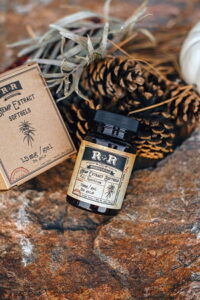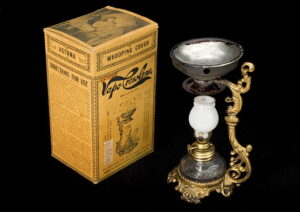Similar to our discussion in Medical treatments of Antiquity, proving medicine during these periods was just as crude. Let’s take a look back as to what drugs were used to “cure” people with health ailments.
Salicylic Acid

Salicylic acid belongs to a class that falls into the category of drugs known as salicylates, which are natural chemicals found in plants, as well as fruits and vegetables. It is mother nature’s way of protecting plants from disease and insects.
Popular among the Native Americans, specifically the Cherokees, Salicylic acid was used to help people who had a fever, pain relievers, and related illnesses. It was not the plant itself, but the bark of the plant that was used.
Salicylic acid is a monohydroxybenzoic acid and is also found in plants in Europe. In the middle of the 19th century, Europeans mass-produced salicylic acid for use as a painkiller. It was considered the predecessor to modern-day aspirin and it is most popular today to decrease redness and swelling on the skin, which subsequently helps remove pimples.
Arsenic
Despite it being a powder of death, arsenic was used in the Victorian era as a beauty cream. It has also been known to be used by the Chinese for medical purposes, but arsenic is a clear white odorless powder. Not the most effective treatments for facial creams or anything else for that matter.
Quinine
Quinine has been used by the Chinese for centuries for malaria but has some side effects, such as headache, ringing in the ears, eyesight issues, and sweating. It can also cause you to get sunburnt more easily. Additional side effects may include deafness, low blood platelets, and a possible irregular heartbeat. Studies on pregnancies are so far been inconclusive.
Quinine is derived from the plant Artemisia annua, where the drug Artemisinin was extracted. This antimalarial drug has been used ever since the 1940s. It was even tested during the early stages of covid to see if this drug can help with preventing the virus from infecting us.
Snake Oil

Snake Oil became a popular remedy for sore aches and pains. Originally used by the Chinese when they immigrated to America to work on the railroad and then used by the citizens as well.
During this time, the Choctaw Native Americans were also using snake oil for medical reasons. This ‘remedy’ stayed popular all the way up to the early 20th century.
Antiseptics
The Listerine name came from Joseph Lister, a 19th-century English physician who used antiseptics during surgery.
Lister’s son marketed the product and then Jordan Lambert, the co-founder of the Warner-Lambert drug firm started selling it in the late 1800s.
Targeted as a mouthwash for sale in 1915, thousands purchased it mainly to rid themselves of bad breath.
Syringes
One of the first syringes to be used were all glass syringes and a pioneer in researching the manufacture of this device was Becton, Dickinson and Company (BD), founded in 1897 by Maxwell W. Becton and Fairleigh S. Dickinson and the company is around with nearly 30,000 employees in over 50 countries. They were also a pioneer in the manufacture of hypodermic needles.
In 1924, Becton, Dickinson produced a syringe designed specifically for insulin injection. In 1924, they introduced the BD Yale Luer-Lok Syringe, (see below), designed by Fairleigh Dickinson, Sr. The Luer-Lok provided a simple method of attaching and removing the needle to and from the syringe. Now called ‘Luer Lock’ connectors, they remain the standard for syringes in the U.S.
Vapo-Cresolene Vaporizer

Coal tar is a mixture used to make coal into gas. This ingredient was used extensively in the late 19th century for all kinds of products, including ointments, shampoos, and medicines. One popular product that entered the market in 1879 was “Vapo-Cresolene”, which was used as a vaporizer to cure respiratory diseases; such as pneumonia, whooping cough, and diphtheria, as well as a host of other ailments. It came with a lamp that was used to heat the liquid cresol with an open flame.
In 1908, studies from the American Medical Association disputed these claims, but nevertheless, the product continued to be sold anyway up to the 1950s.
Interesting are the instructions shown in the image above and rewritten below:
“Fill the lamp with the best Kerosene (Petroleum) Oil obtainable. Alcohol will explode the lamp if used in it. Light the lamp allowing as large a flame as possible; but care be taken for the first fifteen minutes to see that it does not smoke. Place the lamp under the Vaporizor. Place the Vaporizor in a tin or crockery dish to guard against overturning, and set the same on a table near the bed, but out of reach of small children. Lastly, fill the movable cup with Cresolene. Tarry sediment remaining in the cup may be removed with alcohol. “Cresolene should be vaporized in a bedroom of ordinary size and the doors and windows should be kept closed while the Vaporizor is in use. In oppressive weather a window may be open for ventilation. The most convenient time to use the Vaporizor is at night. The cup full of Cresolene is generally sufficient for a night’s treatment. The most delicate child or person in good health experiences no injury. Large doses of whisky, vinegar, Epsom or Glauber Salts should be given once if Cresolene is swallowed or if it falls one the skin, apply cinegar [SIC]or alcohol. The odor of Cresolene will soon pass away if the room is thoroughly aired during the day. Cresolene imparts a burning sensation to the skin and is poisonous if taken internally, it should therefore, be kept out of reach of children.”.
